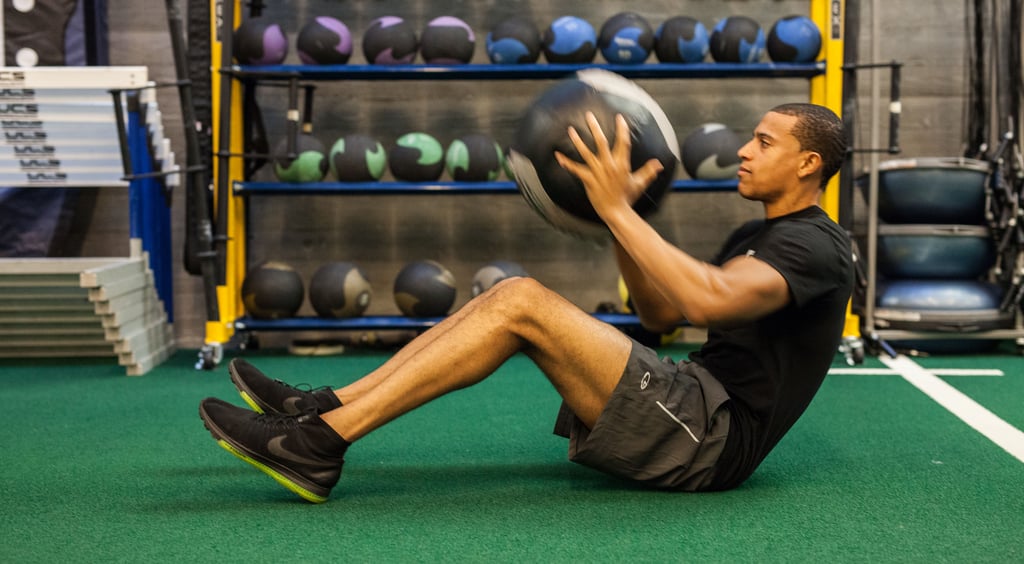Designing a Strength Program: Importance of Core Stability
 Whether it’s kicking, throwing, running, jumping or swimming, an athlete’s core is involved in almost every action. Core muscles are responsible for stabilizing the spine and pelvis as well as generating and transferring energy from the center of the body to its extremities. Developing core strength and stability enables athletes to maximize their power output and perform complex athletic movements that require coordination, balance, and technical skills. Additionally, focusing on core strength can help athletes stabilize other weak areas to reduce the risk of injury. When designing a strength program, coaches should implement core exercises in order to optimize athletic performance.
Whether it’s kicking, throwing, running, jumping or swimming, an athlete’s core is involved in almost every action. Core muscles are responsible for stabilizing the spine and pelvis as well as generating and transferring energy from the center of the body to its extremities. Developing core strength and stability enables athletes to maximize their power output and perform complex athletic movements that require coordination, balance, and technical skills. Additionally, focusing on core strength can help athletes stabilize other weak areas to reduce the risk of injury. When designing a strength program, coaches should implement core exercises in order to optimize athletic performance.
Core Stability and Athletic Performance
Core stability enables athletes to control their body position, generate optimum power, and transfer force along the kinetic chain. Core stability is often needed in rotational movements, which is required in almost every sport. Swinging a racket, spiking a volleyball, and shooting a ball are all actions that require one’s body to shift weight smoothly from one side to the other. By strengthening core stabilizers, athletes can maximize strength in their arms and legs. Additionally, a strong core allows athletes to hold body positions for an extended period of time, such as maintaining a hydrodynamic line in the pool or during a routine in gymnastics. Ultimately, developing core strength and stability enables athletes to maximize their power output and enhance gameday performance.
Core Stability and Injury Prevention
Improving core strength and stability can also help athletes reduce their risk of injury. Focusing on core strength can help athletes stabilize weak injury-prone areas and rehabilitate lower limb injuries. When the core is weak relative to the body, the athlete becomes accustomed to overusing other muscle groups to produce the desired force in any movement. Generally, this puts more strain on muscles to generate energy and on joints to transfer it. For example, athletes with knee injuries tend to have weak hip muscles or tight hip flexors which cause them to improperly shift weight from their trunk causing their knee to be prone to tearing. Ultimately, designing a program emphasizing core strength will produce athletes with greater stability and proper muscle recruitment while in action.
Here are a series of exercises to incorporate when designing a strength program that will enhance core strength and stability for athletes:
V-Ups
SB Pass
Ab Roller
MB Rope Climb
Medicine Ball Throw Down
Recap
The core is an essential piece of athletic performance that helps players start a motion in their legs and carry it through to their arms, or vice versa, with the most efficient transfer of energy. While there are many things to consider when designing a strength program, coaches should implement core exercises in order to to build stronger, healthier athletes. To learn more about designing a strength program check out this article on hip mobility and this article on cyclic training.
About the Author

At Bridge, we are all athletes and coaches first. As athletes, our team has experienced everything from riding the pine on JV, to winning NCAA championships, to competing in the Olympic Games. As coaches, we have helped countless athletes reach their full potential, winning everything from age group section championships to Olympic Gold Medals.
Related Posts

The Best Bench Press Variation You’re...
This post is part of our Coaches Corner series with Taylor Rimmer. Taylor is NSCA-CPT, StrongFirst...

Does Powerlifting Harm Heart Health?
A recent study has discovered that a 12-week supervised strength training program (SSTP) may result...
-1.png)
Barefoot Running: Is It For You? |...
Run Free: Consider Less Cushion
Updated October 2020:
With more athletes looking for ways to...


